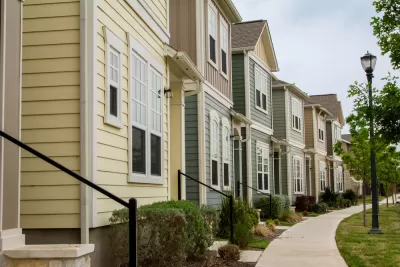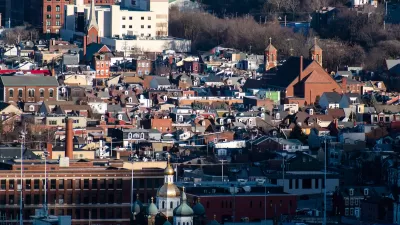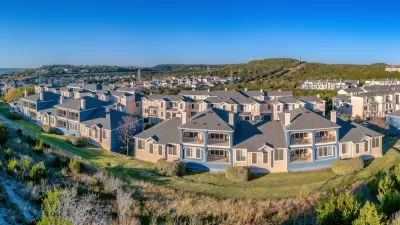Smaller lot sizes for single-family homes can make construction more affordable and homeownership available to more households.

The Austin City Council voted to reduce the city’s minimum lot size for single-family homes as part of its effort to make housing construction more affordable and encourage gentle density increases. As Joshua Fechter notes in The Texas Tribune, the new lot size rule reduces minimum lot size from 5,750 square feet to 1,800 square feet. “The council also voted to allow apartment buildings to be built closer to single-family homes and denser development along a planned light-rail line,” acknowledging that successful transit and housing density go hand in hand.
As Austin housing prices skyrocketed during the pandemic, city officials found themselves able to push through more housing reforms than were possible before. A reform package dubbed “Home Options for Mobility and Equity” (HOME) makes significant zoning changes to encourage housing production, but “Resistance to the reforms runs deep among some neighborhood groups, anti-gentrification activists and the city’s old guard of environmentalists, all of whom have long opposed efforts to boost Austin’s overall housing density.”
FULL STORY: Austin will now allow homes on smaller lots in bid to fight housing affordability crisis

Alabama: Trump Terminates Settlements for Black Communities Harmed By Raw Sewage
Trump deemed the landmark civil rights agreement “illegal DEI and environmental justice policy.”

Study: Maui’s Plan to Convert Vacation Rentals to Long-Term Housing Could Cause Nearly $1 Billion Economic Loss
The plan would reduce visitor accommodation by 25% resulting in 1,900 jobs lost.

Why Should We Subsidize Public Transportation?
Many public transit agencies face financial stress due to rising costs, declining fare revenue, and declining subsidies. Transit advocates must provide a strong business case for increasing public transit funding.

Wind Energy on the Rise Despite Federal Policy Reversal
The Trump administration is revoking federal support for renewable energy, but demand for new projects continues unabated.

Passengers Flock to Caltrain After Electrification
The new electric trains are running faster and more reliably, leading to strong ridership growth on the Bay Area rail system.

Texas Churches Rally Behind ‘Yes in God’s Back Yard’ Legislation
Religious leaders want the state to reduce zoning regulations to streamline leasing church-owned land to housing developers.
Urban Design for Planners 1: Software Tools
This six-course series explores essential urban design concepts using open source software and equips planners with the tools they need to participate fully in the urban design process.
Planning for Universal Design
Learn the tools for implementing Universal Design in planning regulations.
Caltrans
Smith Gee Studio
Institute for Housing and Urban Development Studies (IHS)
City of Grandview
Harvard GSD Executive Education
Toledo-Lucas County Plan Commissions
Salt Lake City
NYU Wagner Graduate School of Public Service





























